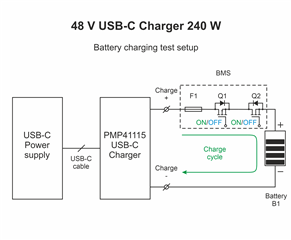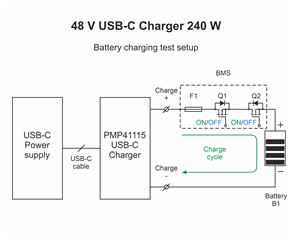Other Parts Discussed in Thread: PMP41115, BQ25756, , USB2ANY, EV2400
Tool/software:
Dear TI support team,
We are currently testing the PMP41115 reference design.
Initially we were not able to get any of the functionality working. After, following the configuration provided by Chris Sterzik in the forum we were able to charge phones and laptops through the USB-C port.
However, we are still unable to charge the main battery when a charger is plugged in the USB-C port. The BMS of our battery does not switch on the Charge-ON MOSFETs before there is voltage on the charge input. And it seems that the Buck/Boost will not start charging before it sees a voltage on its "Output".
How can we configure the system, so it provides voltage initially?
Does this reference design supports dead battery mode?
Can we configure the Buck/Boost converter to work with passive loads, as R load?
Best regards,
Radko




